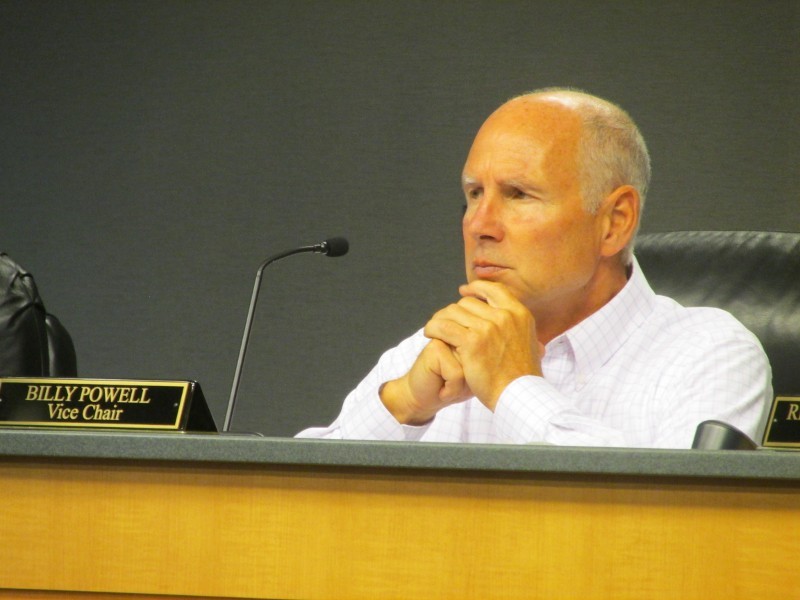GAINESVILLE – The Hall County Commission will hold a first public hearing Thursday evening on the rewriting of a section of the Official Code of Hall County as it pertains to stormwater management, particularly as it regards runoff and detention requirements.
And while most people won’t comprehend the technical difference the new regulations bring as they replace the old “Post-Construction Stormwater Management for New Development and Redevelopment” code, the new, Georgia Environmental Protection Division (EPD) compliant wording does have the attention of one Hall County Commissioner, namely, Billy Powell.
“It’s a program started by Roy Barnes,” Powell said after Monday’s Hall County Commission work session. Barnes served as Georgia’s governor from 1999-2003. The program Barnes initiated has finally made its way to Hall County, one of fifteen counties in the Metropolitan North Georgia Water Planning District.
Powell is knowledgeable in the matter, working as a commercial realtor by trade and having earned a degree in engineering. He knows that the technical changes in the new regulations will bring challenges.
“It’s just a lot more red tape and government regulation driven out of Atlanta,” Powell said.
Bill Nash, Assistant Public Works Director for Hall County, said the new regulations actually began to be adopted by Hall County in 2016 and that the regulation under consideration Thursday evening is a continuation of the changeover.
“It is basically just an additional requirement that engineers are supposed to look at when they are doing site-development projects that are over 5,000-square feet,” Nash explained.
Nash agreed that a 5,000-square foot impervious footprint was not a large area, but that number will be the threshold that triggers the new regulations.
When asked who the new policy will most likely effect both Powell and Nash answered, nearly in unison. “Oh, the developers; it’s going to cost them more money.”
In simpler terms, according to Nash, the new regulations will, “…require engineers to upsize their ponds (retention and detention).
“They are the ones that will be impacted the most,” Nash said, but Powell’s experience has taught him Hall County residents (read: tax payers) will eventually bear the cost of the new regulations.
“This is going to slow development down because of the additional costs,” Powell explained.
Hall County Public Works Director Srikanth Yamala presented the agenda item to the commissioners Monday evening and said, “We definitely do expect some growing pains, if you will, because this is a significant update to how our stormwater ordinance has been interpreted for all these years.”
Both Nash and Powell agree that the new regulations are broad and could affect each building site and situation differently.
Nash said there will be situations where building circumstances make the portions of the new regulations (which focus on capturing the first one-inch of rainfall) onerous. Variables such as soil type, percolation rate, site slope and overall topography, as well as the depth of the natural water table, could make things very complicated.
The new regulations, if approved, will take effect on December 1, 2020. Nash did make the qualification, however, that any developer who can submit his/her plans for approval to the county before that date will be grand-fathered in under the old regulations.
The debate might be arcane to most citizens, but to those in the business, and in the know, the changeover will have a noticeable effect down the road.









